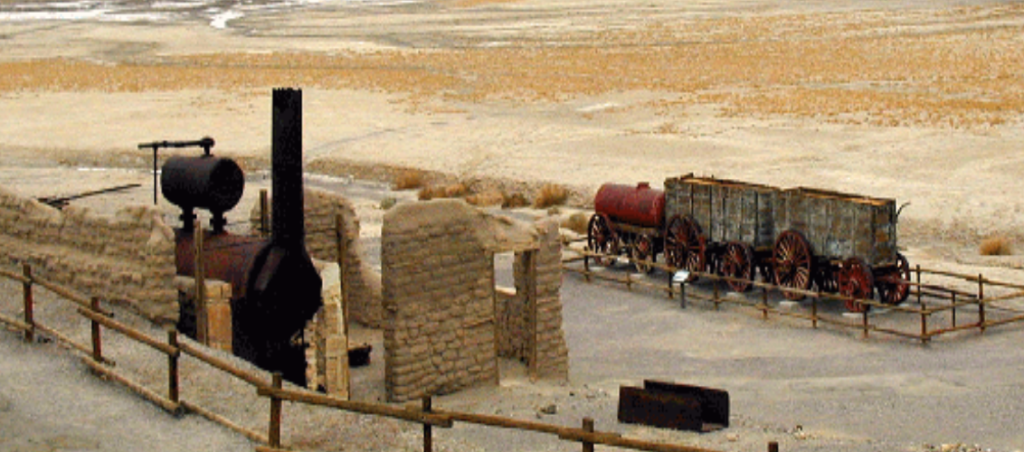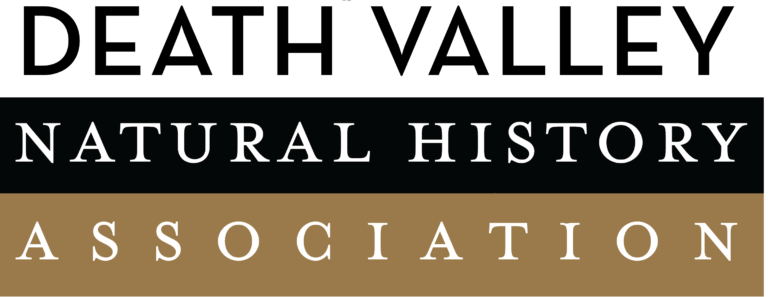
The history of borax in America began in earnest with the borax boom of the 1870s, when many California and Nevada salt flats were claimed by prospectors. One was Aaron Winters, who used the famous green-flame test to locate borax on a Death Valley salt marsh in 1881. His claims were soon purchased by W.T. Coleman, builder of Harmony Borax Works, where marsh muds were refined until 1889. The contemporary Eagle Borax Works folded in 1882 because of poor deposits, summer heat, and remoteness. Coleman’s company beat the heat by moving summer operation to the Amargosa Works near less- torrid Shoshone. The transportation problem was solved by hitching 20-mule teams to gigantic borax wagons with a payload in tandem of over 20 tons.
By 1890, salt marsh operations were obsolete and F.M. “Borax” Smith consolidated most claims in the Pacific Coast Borax Company. He concentrated on mining glassy veins of a rich new borate in the Calico Mountains, south of Death Valley. Not until 1907 did this same new mineral, colemanite, bring the miners back to Death Valley to honey-comb the Greenwater Range–first at the Lila C. Mine and after 1914 at Ryan. From 1928 to 1971 Death Valley borax was again in mothballs while more profitable deposits were worked at Boron and Searles Lake (Trona). Two open-pit mines near Ryan were worked in the 1970s. The Billie Mine, which is underground, is presently the only active borax mining operation in the Death Valley area.

The Borax Museum at the Furnace Creek Ranch highlights minerals and mining equipment. Visit the ruins of Harmony Borax Works to relive this colorful phase of Death Valley’s past. Uses of Borax: Ceramic industries use nearly half of America’s borax in producing pottery glazes, china and porcelain enamel. Heat-resistant borosilicate glass goes into ovenware, lenses and fiberglass. As a flux and deoxidizer, borax is used in welding, soldering, brazing, smelting and refining metals. As a mild antiseptic, it is used in disinfectants, gauze, salves and eye-wash. It is also a mold-retarding wash on citrus fruits, leathers and textiles. It is a preservative in cosmetics, glues
and foods.
As solvents and emulsifiers, borax solutions are used in manufacturing coated papers, playing cards, plywood, plaster, paint, and leathers. In fertilizers, it prevents boron-deficiency diseases of celery, turnips, apples, tobacco, sugar beets and alfalfa. In high concentrations, it is a weed killer and insecticide.
Boron-steel alloys go into armor plates. A new boron fiber developed by the space program is lighter than aluminum but stronger than steel. Boron carbide for cutting tools is an abrasive second only to diamonds in hardness. Additional uses of borates include gasoline additives, photo developers, rocket fuels, buffers in electroplating solutions, corrosion inhibitors in antifreeze, fire retardants chemical (borax bead) tests, and dye stabilizers.
